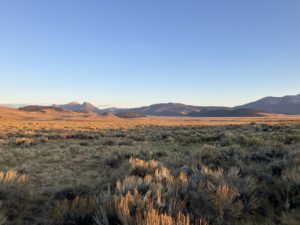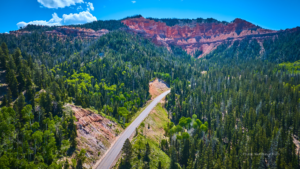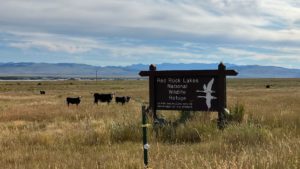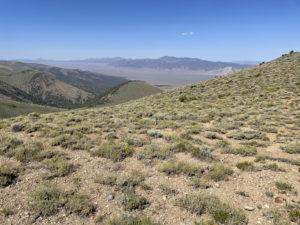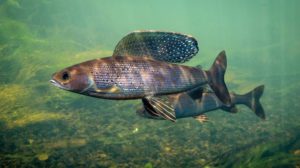For Immediate Release, June 13, 2024
| Contact: | Randi Spivak, Center for Biological Diversity, (310) 779-4894, rspivak@biologicaldiversity.org Erik Molvar, Western Watersheds Project, (307) 399-7910, erik@westernwatersheds.org Steve Holmer, American Bird Conservancy, (202) 750-1412, Sholmer@abcbirds.org Sarah Stellberg, Advocates for the West, (208) 342-7024 x 209, sstellberg@advocateswest.org Joanna Zhang, WildEarth Guardians, (573) 529-6027, jzhang@wildearthguardians.org |
Federal Officials Urged to Strengthen Sage Grouse Habitat Protections, Prevent Bird’s Extinction
WASHINGTON— Conservation organizations submitted comments today blasting the U.S. Bureau of Land Management’s draft amendment for 77 land-use plans across the western United States intended to protect the imperiled greater sage grouse. The bird is an umbrella species whose survival is intricately linked to the health of the vast Sagebrush Sea ecosystem. The groups say the administration’s preferred alternative falls woefully short of what’s needed to stem the bird’s downward population spiral. The U.S. Geological Survey found that the population declined nearly 80% between 1968 and 2023 and a shocking 40% since 2002.
“BLM officials know exactly how to protect greater sage grouse, but their preferred plan would fail these iconic birds and keep them headed toward extinction,” said Randi Spivak, public lands policy director at the Center for Biological Diversity. “It’s time for the agency to finalize a robust plan for greater sage grouse and meet its obligations under the law to prevent the species from going extinct.”
The plans apply to 69 million acres of BLM-managed public lands across 10 western states, which amounts to about half of the remaining habitat for the greater sage grouse.
Greater sage grouse rely on large, unfragmented expanses of sagebrush for survival. Yet the Sagebrush Sea continues to experience degradation, fragmentation and loss. Threats to sage grouse habitat, which include climate change, invasive species and wildfires, are adding to the harms of past and ongoing authorized uses that compromise the diversity and natural resilience of the sagebrush system. These threats include oil and gas extraction, livestock grazing, mining, habitat conversion and development.
“The time has come for strong, science-based protections that will, for the first time, impose reasonable limits on the commercial land uses that are harmful to the birds and their habitats,” said Erik Molvar, executive director of Western Watersheds Project. “The sage grouse plan amendment as currently proposed is driven by the political preferences of industry-driven states rather than by the biological needs of sage grouse. It’s a recipe for continued declines.”
The groups are calling on the BLM to select proposed Alternative 3, which affords the most protections to remaining sage grouse habitat and provides the best chance to reverse declining trends. This alternative follows the best available science recommendations that will protect intact habitat from a range of damaging uses.
“Securing the future of the greater sage grouse and its habitat is entirely within our grasp if we set up ACECs and suspend oil and gas drilling in these sensitive areas,” said Steve Holmer of American Bird Conservancy. ”For decades, the grouse’s decline has been sending out an S.O.S.; this may be the last chance to firmly protect what habitat remains.”
“As a society we have ways to address climate change, but once extinction occurs we have no way to reverse that catastrophe,” said Joanna Zhang, wild rivers advocate at WildEarth Guardians. “If current trends continue, we are going to lose one of the most iconic birds of American West. BLM must provide the strongest protections possible if we stand a chance of getting this dancing bird on the road to recovery.”
Background
Greater sage grouse (Centrocercus urophasianus) once lived on hundreds of millions of acres across the West, but their populations have plummeted as livestock grazing, oil and gas development, roads, powerlines and nonnative species have spread throughout their habitat.
Rather than protect the bird under the Endangered Species Act, in 2015 the Obama administration developed land-use plans that were supposed to provide a regulatory framework for conserving the species’ habitat. The Trump administration subsequently weakened those plans to allow for more disturbance and industrial activity, but those amendments were blocked by a federal court, putting the 2015 plans back into effect.
The Biden administration recognized that the ongoing population declines required additional protective measures, and in January 2023 began the process to revise the 2015 plans.
Protecting the greater sage grouse and its habitat benefits hundreds of other species that depend on the Sagebrush Sea ecosystem. These include pygmy rabbits, pronghorns, elk, mule deer, golden eagles, native trout, and migratory and resident birds.
Attached photo, sage grouse battling on a Red Desert lek, is available for media use. Photo credit: Western Watersheds Project photo.

